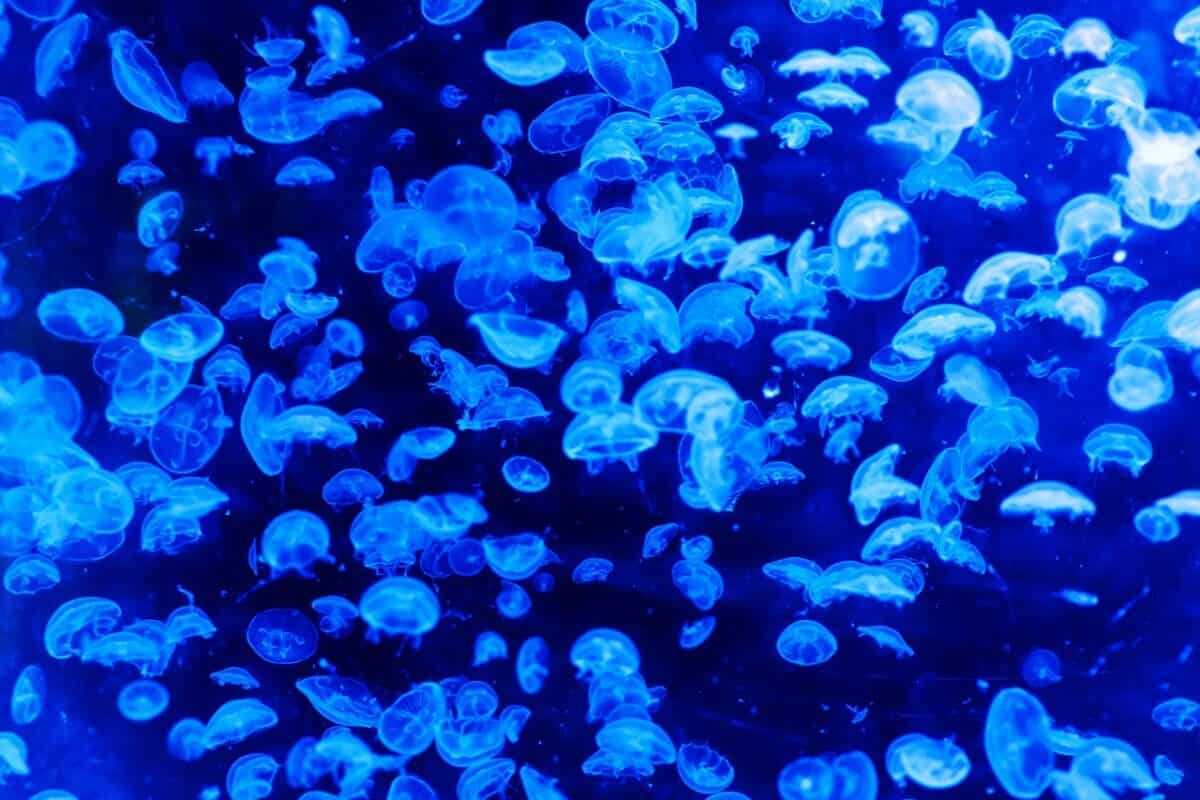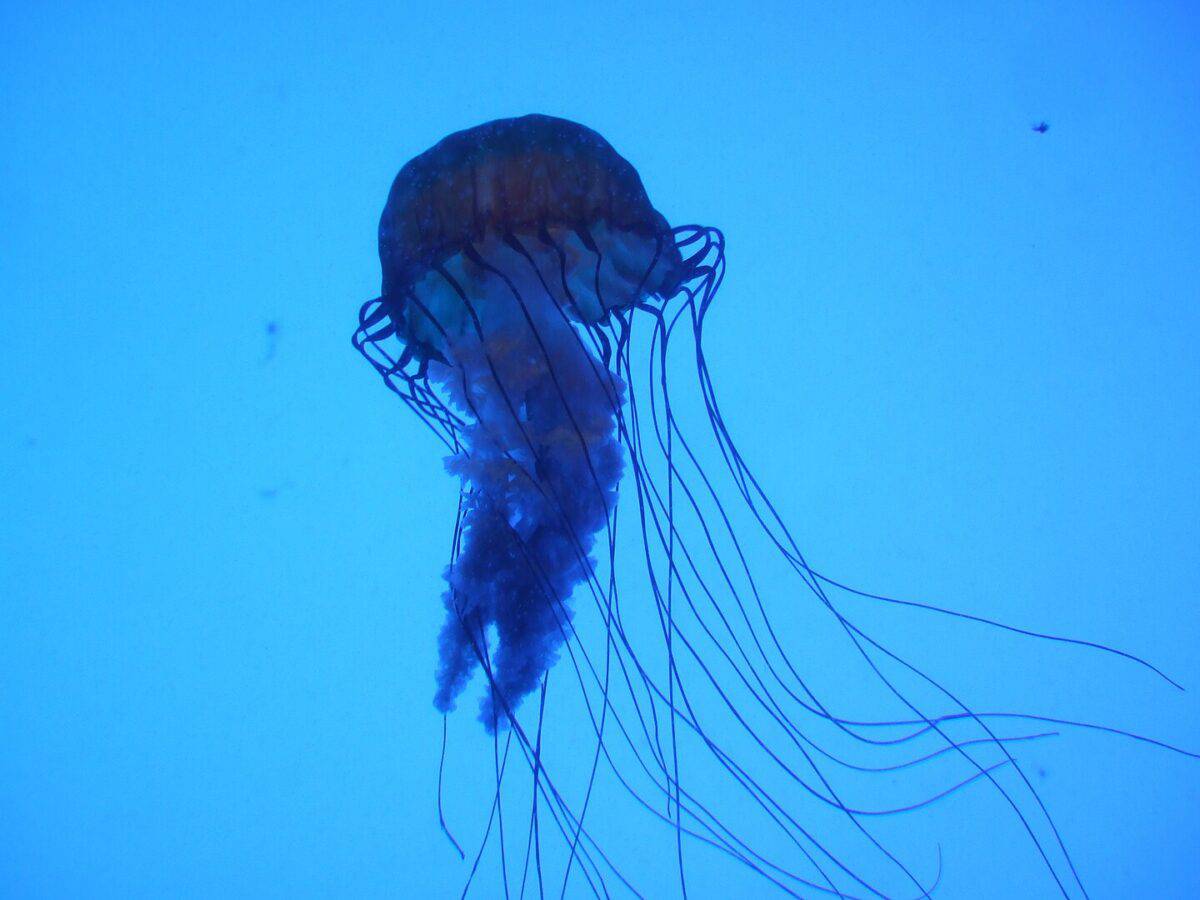The box jellyfish is often regarded as one of the most venomous creatures inhabiting the world’s oceans. Belonging to the class Cubozoa, these gelatinous sea creatures have captivated the attention of marine biologists and enthusiasts alike. Their cube-shaped, transparent bodies house tentacles loaded with potent venom, which are a testament to the evolutionary adaptations that make them efficient predators and a concern for human safety.
Physical Characteristics

Box jellyfish are easily distinguishable from other jellyfish types by their unique cube-shaped bell, from which they derive their name. Measuring up to 20 centimeters along each side, the bell is transparent, making the jellyfish nearly invisible in its natural oceanic environment. From each of the four corners of the bell, tentacles extend, often growing as long as three meters.
The jellyfish typically possess 15 tentacles on each corner, each lined with thousands of stinging cells known as cnidocytes. These cells contain nematocysts, or stingers, that can inject venom capable of paralyzing or even killing prey almost instantaneously. Their unique body structure confers not only superior swimming abilities compared to other jellyfish but also makes them agile hunters.
The Potency of Box Jellyfish Venom

Box jellyfish venom is a complex cocktail of toxins that can have devastating effects on the cardiovascular and nervous systems of their prey. It contains compounds that can cause cells to become porous, leading to a flood of ions that disrupt physiological function. In small prey, this rapid immobilization allows the jellyfish to capture and consume with ease.
For humans, stings are exceedingly painful and can sometimes result in fatal outcomes within minutes if not treated promptly. Symptoms of a sting include severe pain, burning sensations, nausea, and, in extreme cases, cardiac arrest. Hospitals in regions where box jellyfish are prevalent often carry antivenoms to counteract the effects of stings, a testament to the seriousness of box jellyfish encounters.
Habitat and Distribution

Box jellyfish are predominantly found in the warm coastal waters of the Indo-Pacific region, particularly around Northern Australia and Southeast Asia. They tend to inhabit shallow coastal waters, estuaries, and river mouths, which explains their frequent interactions with humans, especially during the summer months when both jellyfish activity and beach visits peak.
Lifespan and Behavior

Despite their deadly nature, box jellyfish have relatively short lifespans, typically ranging from a few months to a year. They follow a simple cycle: polyps settle on the ocean floor, releasing juvenile jellyfish (medusae) that grow and eventually reproduce, continuing the cycle.
In terms of behavior, box jellyfish are more advanced than their simpler cousins. They have a rudimentary nerve ring and possess clusters of eyes that allow them to navigate their environment actively. Unlike the passive drifting observed in other jellyfish species, box jellyfish can swim purposefully, which assists in both predation and navigation.
Interactions with Humans

Interactions between box jellyfish and humans often result in stings, making them a significant public health concern in inhabited coastal regions. To minimize risks, authorities in some regions deploy protective nets or issue warnings when box jellyfish are known to inhabit local waters.
Public education on preventative measures, such as wearing protective clothing and using vinegar to neutralize stings, has been pivotal in reducing fatalities and serious injuries. Swimming in designated areas and adhering to safety guidelines can significantly decrease the potential for harmful encounters with these enigmatic sea creatures.
Conclusion

The box jellyfish represents a fascinating intersection of beauty and danger in the marine world. Its evolutionary adaptations have made it a formidable predator in tropical seas, showcasing the delicate balance of nature. Understanding these creatures and respecting their habitat is crucial for safe cohabitation with one of the ocean’s most enigmatic and lethal residents.
- 10 Common Chicken Behaviors and What They Mean - August 9, 2025
- 14 Creatures That Can Freeze and Thaw Back to Life - August 9, 2025
- 10 Animals That Risked Their Lives to Save Humans - August 9, 2025

